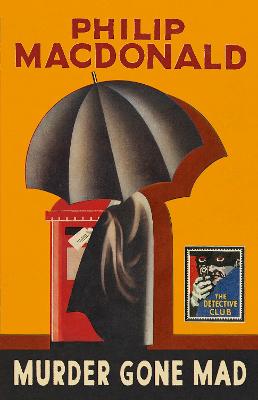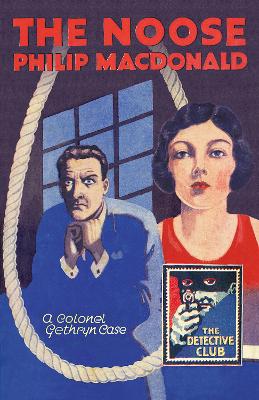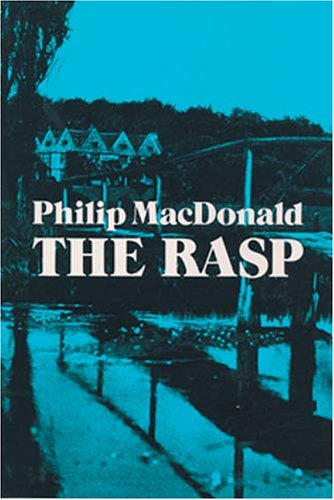Detective Club Crime Classics
5 total works
The first Golden Age detective novel to feature a serial killer with no rational motive – and surely impossible for Scotland Yard to solve?
A long knife with a brilliant but perverted brain directing it is terrorising Holmdale – innocent people are being done to death under the very eyes of the law. After every murder a business-like letter arrives announcing that another ‘removal has been carried out’, and Inspector Pyke of Scotland Yard has nothing to go on but the evidence of the bodies themselves and the butcher’s own bravado. With clear thinking impossible in the face of such a breathless killing spree, the police make painfully slow progress: but how do you find a maniac who has no rational motive?
Philip MacDonald had shown himself in The Noose and The Rasp to be a master of the detective novel. In Murder Gone Mad he raised the stakes with the first Golden Age crime novel to feature a motiveless serial killer prompted only by blood lust – inspired by the real-life case in 1929 of the Düsseldorf Monster – and this time without the familiar Anthony Gethryn on hand to reassure the reader.
This Detective Story Club classic is introduced by L. C. Tyler, Chair of the Crime Writers Association and author of the award-winning ‘Elsie and Ethelred’ crime novels and the John Grey historical mysteries.
Gentleman detective Anthony Gethryn is in a race against time to save an innocent man from the hangman’s noose.
Colonel Anthony Gethryn is recalled from a holiday in Spain to solve a murder in the November fogs of London. He finds that his wife is sheltering Mrs Bronson, whose husband is in prison awaiting execution for the murder of a gamekeeper six months before. A petition for reprieve has been rejected and Bronson will shortly hang for someone else’s crime. Convinced by Mrs Bronson of her husband’s innocence, Gethryn embarks on a seemingly hopeless race against time to overthrow the guilty verdict and find the real murderer – and he has only five days before Bronson’s date with the hangman’s noose.
The Noose saw the return of Philip MacDonald’s gentleman detective Anthony Ruthven Gethryn, whose debut in The Rasp six years earlier had been a big success. Judged to be his best book yet, The Noose had the distinction of being chosen as the first book to be published in Collins’ Crime Club in May 1930, helping to immortalise it as one of the seminal books of the crime genre.
This Detective Story Club classic includes an introduction by H. R. F. Keating, which first appeared in the Crime Club’s 1985 ‘Disappearing Detectives’ series.
A classic Golden Age crime novel, and the first time Philip MacDonald wrote a crime novel without a detective.
‘Rynox’ is at that point where one injudicious move, one failure of judgement, one coincidental piece of bad luck will wreck it. So why would anyone send more than a million pounds in one-pound notes to Mr Salisbury of the Naval, Military and Cosmopolitan Assurance Corporation? Who would shoot F.X. Benedik, the senior partner of the firm, through the head in his study? And where is the choleric Mr Marsh, who had an appointment with F.X. on the night of his death? Rynox is on the edge of big things. But the edge of big things is a narrow edge. And narrow edges are slippery . . .
Philip MacDonald’s Rynox is an engrossing murder mystery set in the business world, a crime novel without a detective in which murder and big business are inextricably combined. Beginning with the Epilogue and ending with the Prologue, it is a subtle and exciting book by one of the greatest masters of the mystery story.
This Detective Club classic includes a rare introduction by author Philip MacDonald himself, never before published in the UK, and also ‘The Wood-for-the-Trees’, the only short story to feature his series detective, Anthony Gethryn.
A victim is bludgeoned to death with a woodworker's rasp in this first case for the famed gentleman detective Anthony Gethryn - the latest in a new series of classic detective novels from the vaults of HarperCollins.
Ex-Secret Service agent Anthony Gethryn is killing time working for a newspaper when he is sent to cover the murder of Cabinet minister John Hoode, bludgeoned to death in his country home with a wood-rasp. Gethryn is convinced that the prime suspect, Hoode's secretary Alan Deacon, is innocent, but to prove it he must convince the police that not everyone else has a cast-iron alibi for the time of the murder.
This Detective Story Club classic is introduced by crime fiction expert and writer Tony Medawar, who investigates the forgotten career of one of the Golden Age's finest detective story writers.
The ultimate murder mystery - can you find the murderer before the detective?
Maxwell Brunton was found dead in his study - murdered beyond doubt. There were ten people in the house on the night of the murder, and at least seven of them had an adequate motive for murdering him. But Anthony Gethryn has only the evidence given at the Coroner's inquest to work with. In other words YOU, the reader, and HE, the detective, are upon equal footing. HE solves the mystery. Can YOU?
The Maze, first published in 1932, is Philip MacDonald's contribution to the conception of the totally logical puzzle - an exercise in ratiocination, as Poe called it - which so preoccupied detective story writers in the 'Golden Age' of the 1920s and '30s. Written in the form of a court transcript, it is the ultimate puzzle novel, an absolutely fair test of the reader's ability as a detective . . . an enthralling story - one of Philip MacDonald's best.
This Detective Story Club classic includes an introduction by Julian Symons, who selected The Maze for the Crime Club's 1980 Jubilee reprint series, celebrating the best of 50 golden years of crime publishing.




